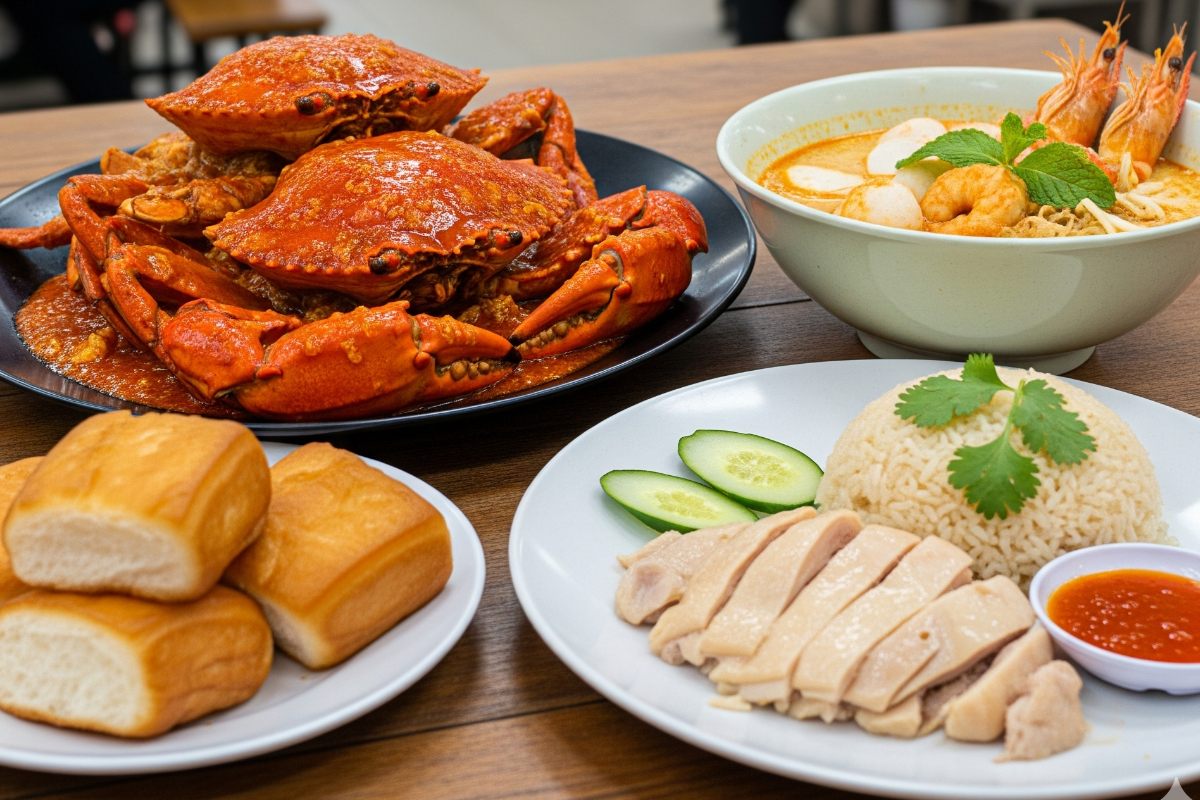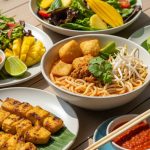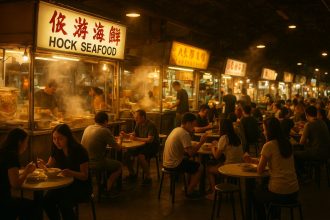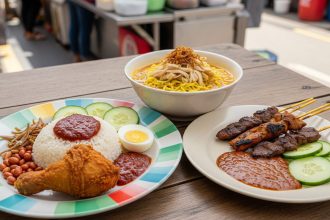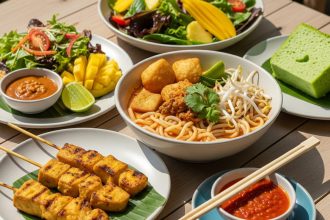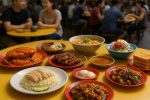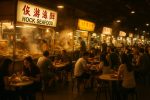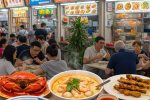If you are planning your next post or looking for content that stands out, foods you must try in Singapore will give you more than just a meal. They offer stories, colors, and flavors that instantly catch attention on any feed. Each dish reflects the blend of Malay, Chinese, Indian, and Peranakan cultures that makes the city unlike anywhere else. Imagine sharing a bowl of laksa that glows with spice, or capturing a snapshot of chili crab sauce dripping off a shell; your audience will want to know where to find it.
Beyond the photos, these foods connect you to local traditions that have shaped daily life for generations. They also bring people together in ways that words often cannot. Much of this happens at hawker centres, where locals gather for affordable, authentic meals and visitors get a true taste of Singapore’s food culture. Whether you are a travel blogger aiming to inspire, a business looking to connect with audiences, or simply someone who loves food with a story, the flavors of Singapore will keep you coming back for more.
What Awaits You in the World of Foods in Singapore
This guide will walk you through ten iconic foods in Singapore that represent the country’s vibrant flavors.
- Hainanese chicken rice, chili crab, laksa, and other classics explained
- Where to try them, from hawker centres to local cafés
- Simple tips for enjoying Singapore’s food culture like a local
10 Famous Foods to Try in Singapore When You Visit
Singapore is known as a food paradise, and these dishes are the heart of that reputation. Each one reflects the country’s cultural mix and offers flavors you won’t forget. From savory meals to sweet treats, here are ten foods in Singapore that every visitor should try at least once.
Hainanese Chicken Rice
Often called Singapore’s national dish, Hainanese chicken rice is as comforting as it is flavorful. It may look simple at first glance, with tender poached chicken served with rice cooked in chicken stock, but the taste proves otherwise. The dish is completed with garlic-chili sauce and dark soy sauce, making it both savory and fragrant.
This dish has its roots in Hainan, China, yet it has evolved into something uniquely Singaporean. Locals enjoy it as a daily staple, while tourists are drawn to its clean flavors and rich background. For the best experience, try it at Maxwell Food Centre or one of the Michelin-recognized hawker stalls that specialize in this dish. For those who want to try making it at home, our Hainanese chicken rice recipe offers step-by-step guidance.
Chili Crab
Few dishes shout Singapore as loudly as chili crab. The large crabs are stir-fried in a thick tomato-based sauce laced with garlic, ginger, and chili. The flavor is both sweet and spicy, and the best way to eat it is with your hands, cracking shells and dipping deep-fried buns into the sauce.
Chili crab became famous in the 1950s when a local chef experimented with new flavors. Today, it remains one of the most loved seafood dishes in the country. Locals often recommend Jumbo Seafood or Long Beach Seafood for a memorable serving, but many smaller spots also do it justice.
Satay
Satay is grilled meat skewers usually served with peanut sauce, rice cakes, and cucumber slices. The meat, often chicken, beef, or mutton, is marinated in spices before being grilled over charcoal. The smoky aroma alone can draw you from across a market.
This dish has Malay roots and is common in night markets and food centres. Satay is not just about the meat but also the shared experience. Friends and families often gather around plates of satay, dipping and sharing. Lau Pa Sat is especially known for its satay street, which comes alive in the evenings.
Laksa
Laksa offers comfort in a bowl with its spicy coconut milk-based broth, rice noodles, prawns, fishcakes, and a touch of sambal. It is rich, hearty, and deeply aromatic. Katong Laksa is one of the most popular versions, with its noodles cut short so you can eat them with a spoon.
This dish reflects Peranakan influence, a blend of Chinese and Malay traditions. If you’d like to recreate the flavors at home, our laksa paste recipe shows you how to make the essential base for this iconic dish.
For visitors, laksa is often a first introduction to the layered flavors of foods in Singapore. Eating it on a rainy day or at a bustling hawker stall adds to the experience, giving you a taste of local life.
Char Kway Teow
Char kway teow is a fried noodle dish cooked over high heat in a wok, giving it the smoky “wok hei” flavor that Singaporeans love. It combines flat rice noodles, egg, Chinese sausage, and cockles, all tossed in dark soy sauce. The mix of flavors, such as savory, slightly sweet, and smoky, makes it a street food favorite.
This dish was once seen as a humble worker’s meal, loaded with energy-rich ingredients for laborers. Today, it is a must-try for noodle lovers who want to taste authentic hawker food. While it is available at many stalls, Geylang and Chinatown hawker centres often have excellent versions.
Nasi Lemak
Nasi lemak is coconut rice served with sambal chili, fried anchovies, peanuts, egg, and cucumber. In Singapore, it can also come with fried chicken or otah, a spicy fish cake. The result is a meal that is fragrant, spicy, and satisfying.
Although it has Malaysian roots, nasi lemak has become a favorite in Singapore. Locals enjoy it for breakfast, lunch, or even late at night. The balance of textures and flavors is what makes it stand out. Some cafés now give it a modern twist, but hawker stalls still serve the most authentic plates.
Roti Prata
Roti prata is a crispy yet fluffy flatbread often eaten with curry. Some people enjoy it plain, while others prefer it with egg, cheese, or even sugar for a sweet version. Watching prata makers toss and flip the dough until it stretches thin is part of the fun.
Originating from Indian cuisine, prata is loved for its versatility. It is filling enough to be a main meal yet light enough to be a snack. Many locals consider it a late-night comfort food, best enjoyed with friends at 24-hour eateries known as prata shops.
Hokkien Mee
Hokkien mee is a stir-fried mix of egg and rice noodles cooked in rich seafood stock with prawns, squid, and bits of pork. Served with sambal chili and lime, it balances richness with a refreshing tang. As seafood is central to foods in Singapore, this dish is a favorite at hawker centres, with Newton Food Centre and Old Airport Road among the most recommended spots.
Kaya Toast with Soft-Boiled Eggs
Kaya toast is a traditional breakfast of crispy bread with kaya, a coconut jam made from eggs, sugar, and coconut milk, plus a slab of butter. It is usually served with soft-boiled eggs seasoned with soy sauce and white pepper, creating a mix of sweet, salty, and creamy flavors. Best enjoyed with kopi or teh at a local kopitiam, kaya toast reflects the slower moments of Singaporean life and offers visitors a simple way to taste the country’s traditions.
Ice Kachang
Ice kachang is a colorful shaved ice dessert topped with syrups, red beans, sweet corn, grass jelly, and palm seeds. Refreshing under the tropical sun, it often resembles a rainbow and is as eye-catching as it is tasty. Many Singaporeans grew up enjoying it at hawker centres, and while cafés now serve creative versions, the traditional style remains popular. Visitors also often try chendol, another shaved ice treat with coconut milk and gula melaka syrup.
Why Foods in Singapore Are Worth Every Bite
The foods in Singapore are more than just meals. They carry the traditions of communities that have shaped the country and continue to bring people together today. Each dish tells a story about migration, trade, and local creativity.
For travelers, eating in Singapore offers a deeper way to connect with the city. From hawker stalls to cafés, the flavors are always authentic and memorable. Whether you are here for a short stopover or a longer visit, these dishes guarantee that food will become one of your favorite parts of the trip.
